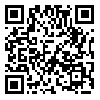Volume 14, Issue 4 (10 2002)
J Dent Med-tums 2002, 14(4): 5-13 |
Back to browse issues page
Download citation:
BibTeX | RIS | EndNote | Medlars | ProCite | Reference Manager | RefWorks
Send citation to:



BibTeX | RIS | EndNote | Medlars | ProCite | Reference Manager | RefWorks
Send citation to:
Khavari A, Yassaei S. Soft tissue profile changes following incisor retraction at the age range of 15 to 24 years. J Dent Med-tums 2002; 14 (4) :5-13
URL: http://jdm.tums.ac.ir/article-1-473-en.html
URL: http://jdm.tums.ac.ir/article-1-473-en.html
Abstract: (44343 Views)
The purpose of this study was to investigate the soft tissue profile changes of the lower face following premolars extraction and incisor retraction. In order to do that, pre-and post treatment lateral cephalometric radiographs of 40 female orthodontic patients, with cl. II div. I malocclusion (22 patients) and bialveolar protrusion (11 patients) were analyzed. At beginning of orthodontic treatment, their mean age was 18.10 years, ranging from 15-24. All cephalometric radiographs were analyzed by a conventional and confirmed method called "combination analysis". The findings revealed that "lip tension" is a significant factor in soft tissue response to orthodontic treatment, so that in patients with lip strain, nasolabial angle increase was significantly more that those without lip strain. Moreover, regarding the increase of vermilion thickness of the upper lip, a significant difference was observed between two groups. In patients with lip strain, following premolars extraction and incisors retraction, lip strain was reduced or eliminated and upper lip vermilion thickness increased, following incisors retraction, the slope of nasal inferior border, in the group with lip strain, was reduced, while in the group without lip strain, this slope increased.
| Rights and Permissions | |
 |
This work is licensed under a Creative Commons Attribution-NonCommercial 4.0 International License. |




